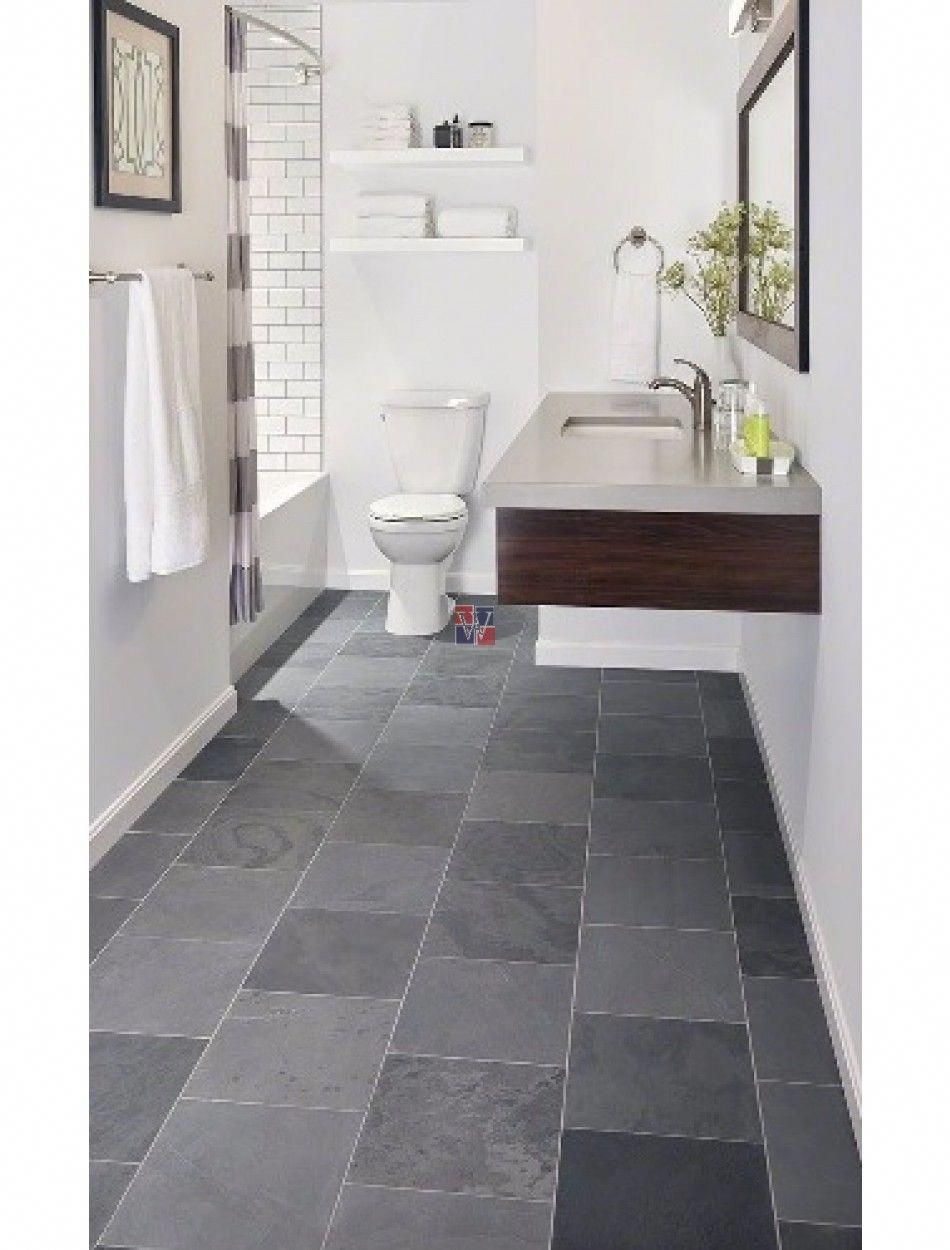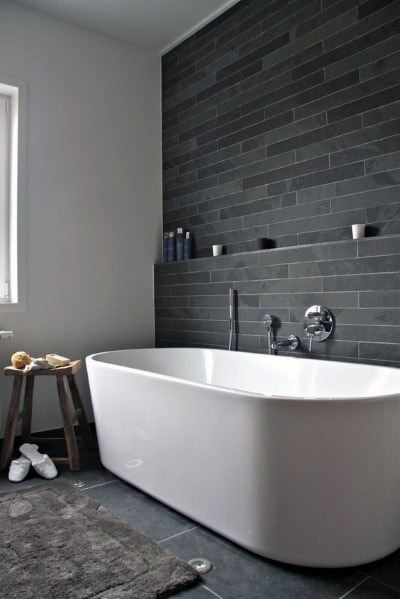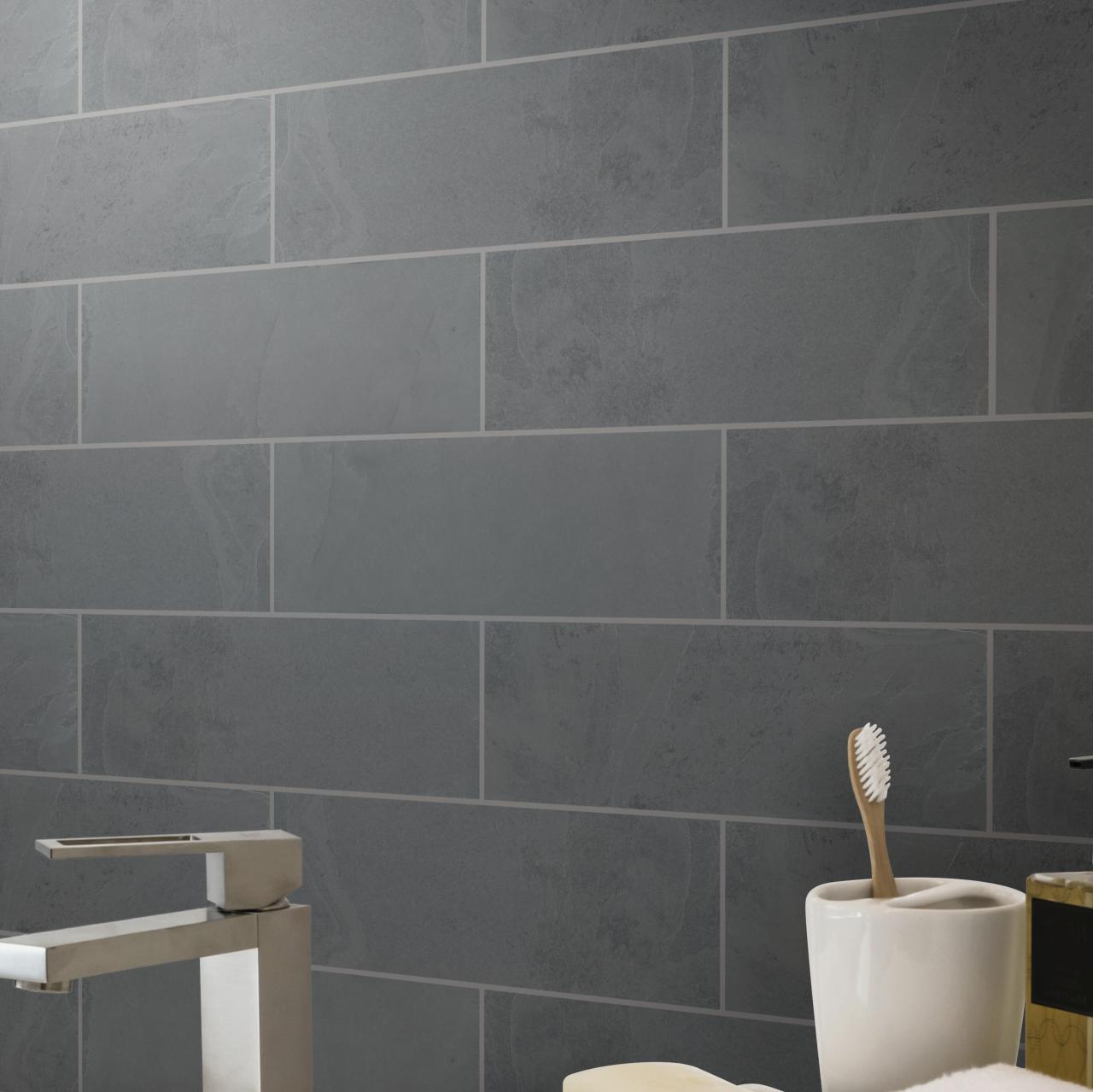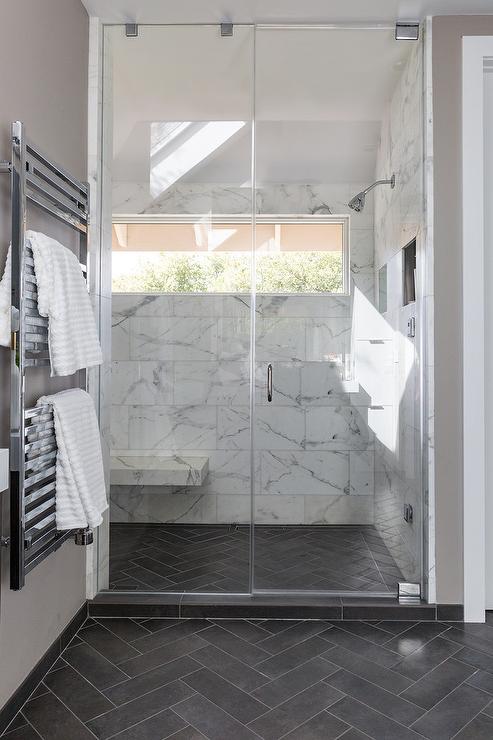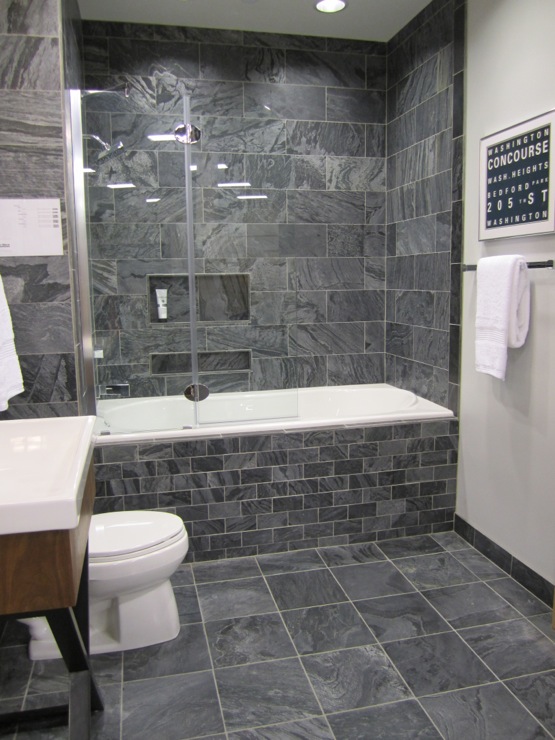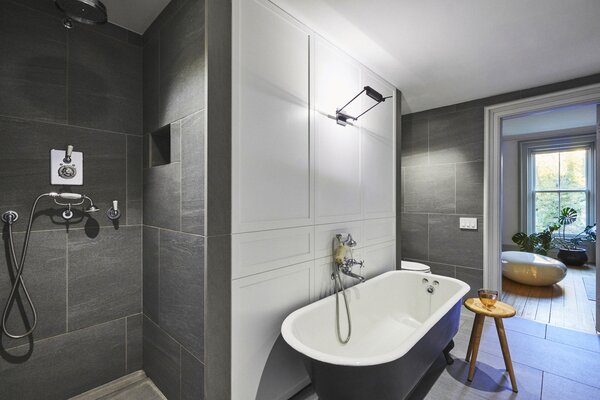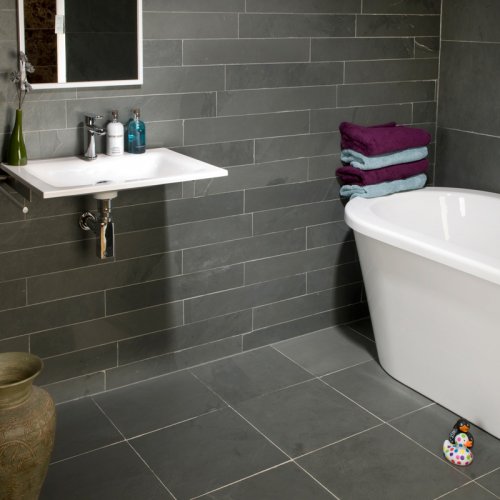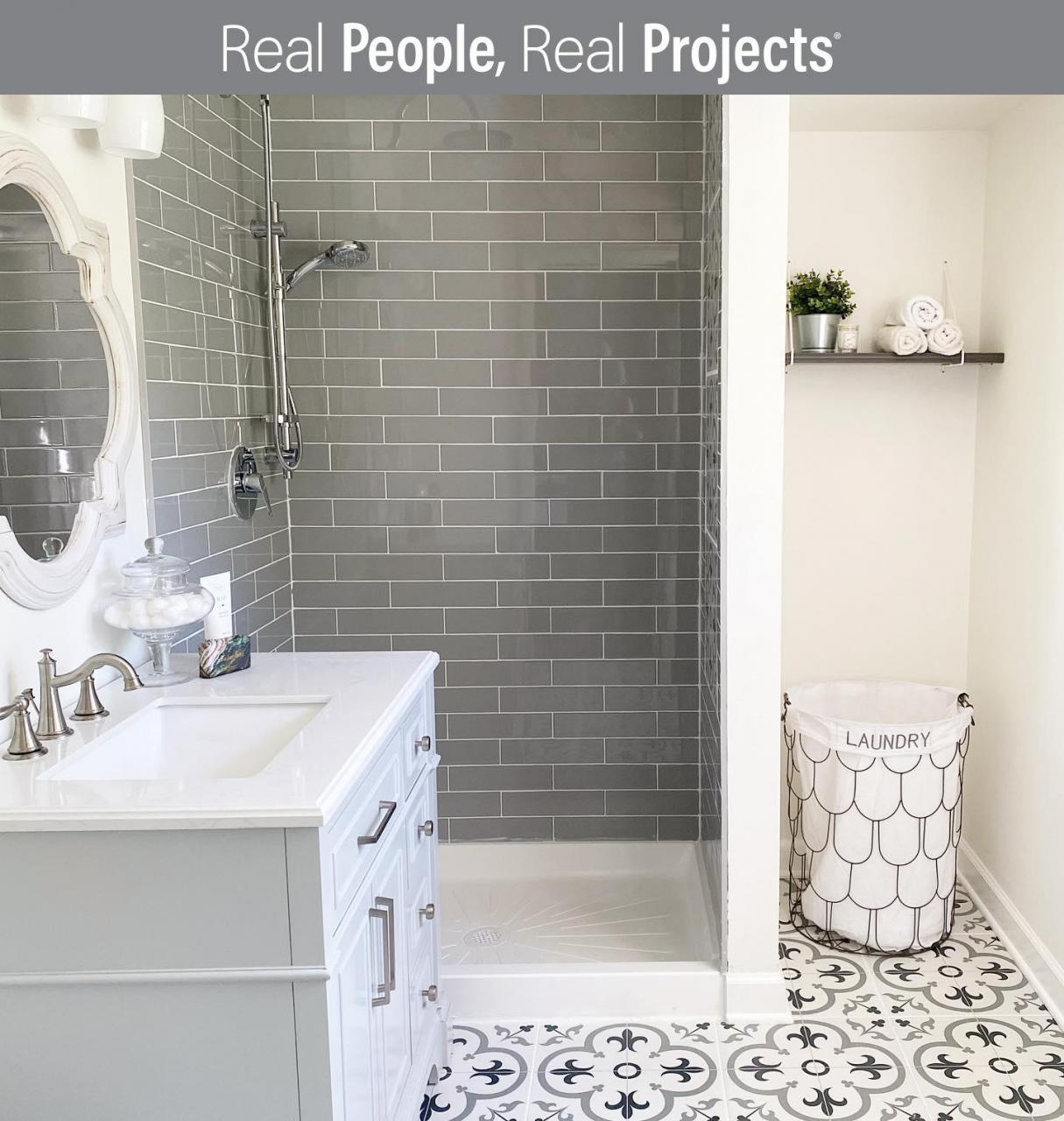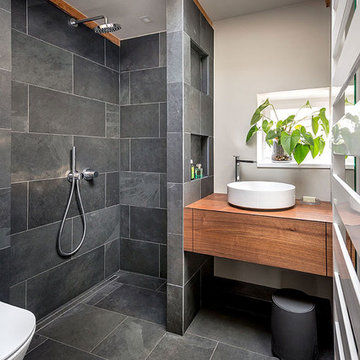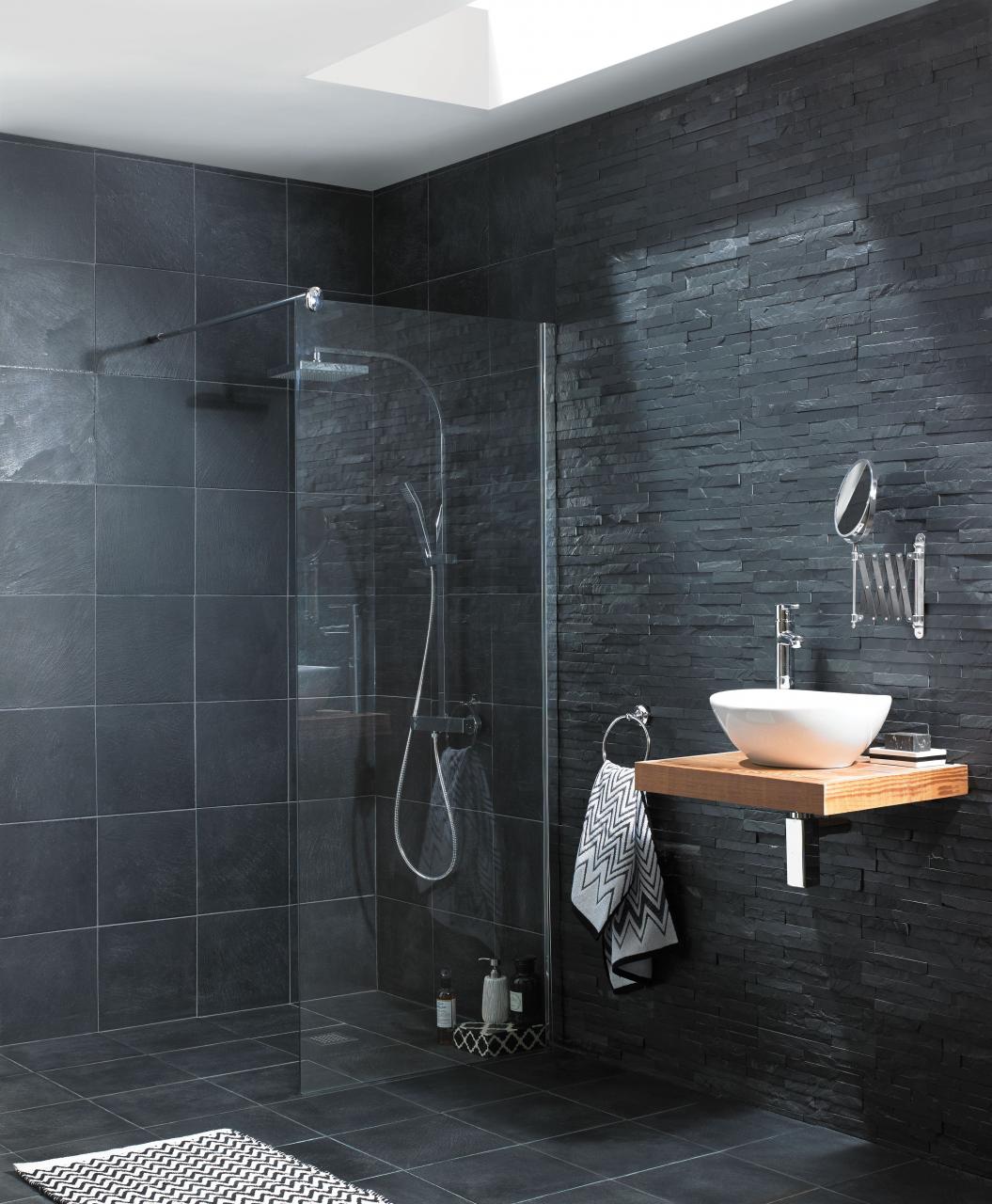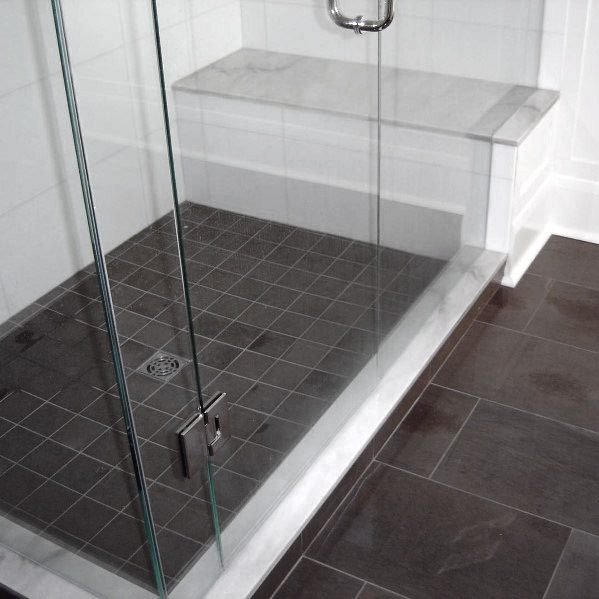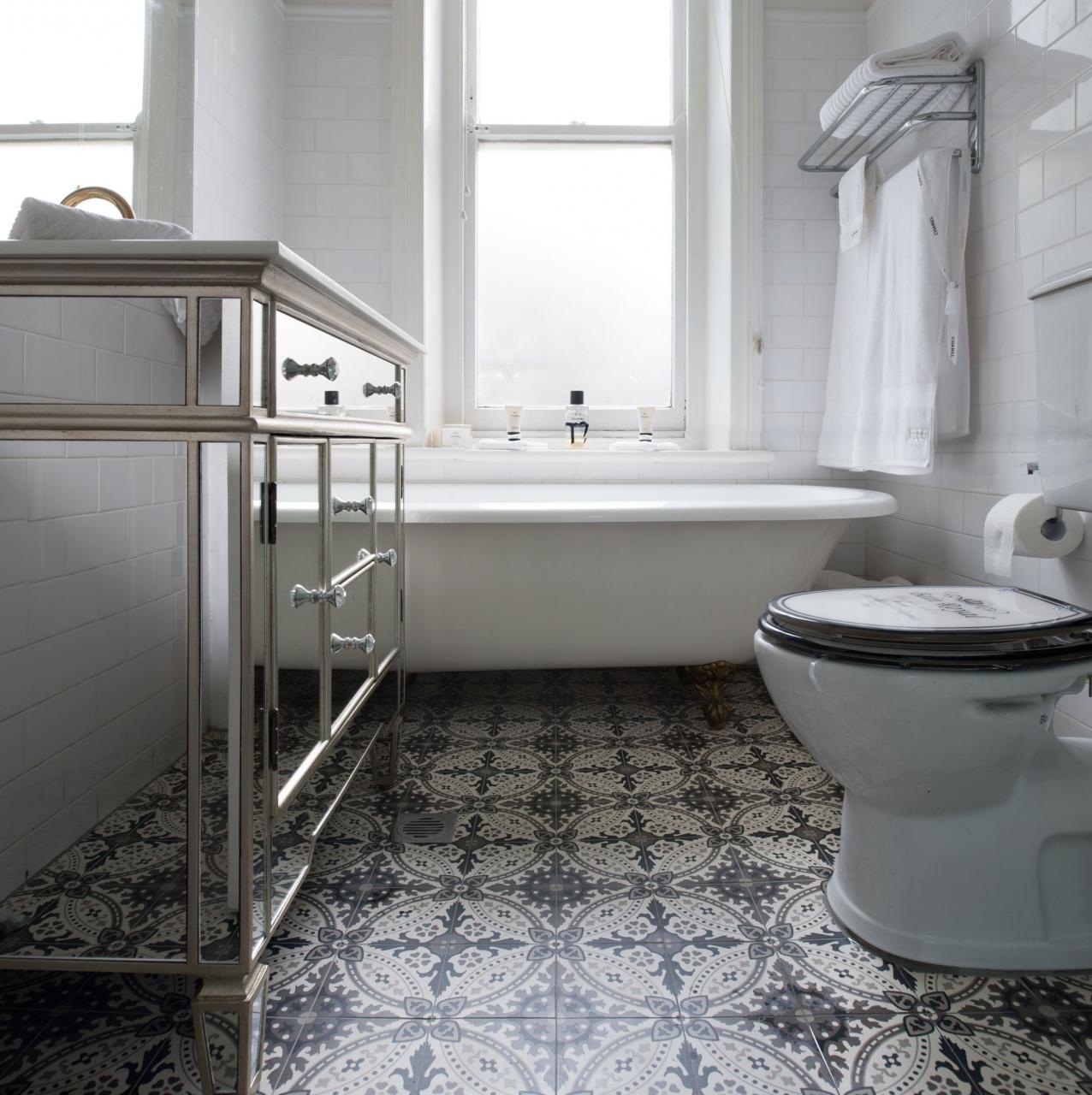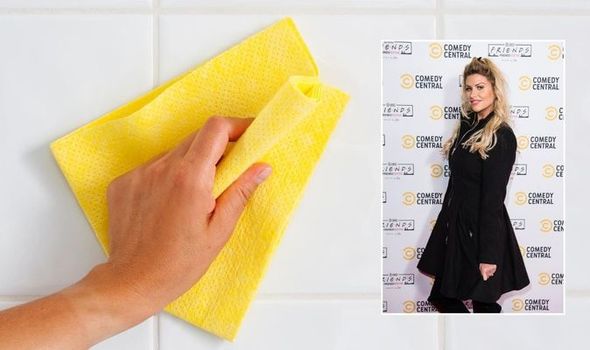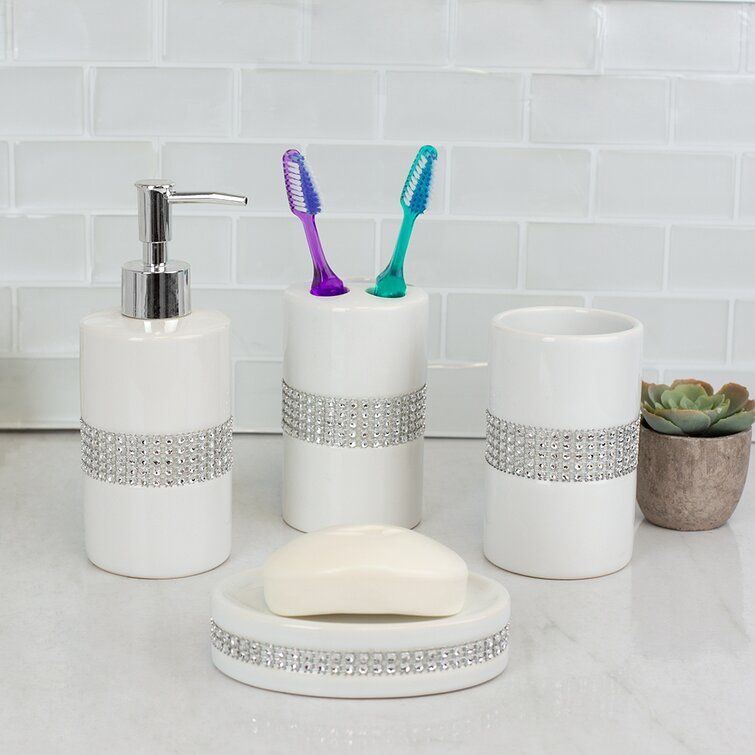Why Choose Gray Slate Tile for Your Bathroom?
When it comes to designing a bathroom, choosing the right tile can make all the difference. I’ve always been drawn to the beauty of natural materials, and gray slate tile is a top contender for several reasons. Not only does it offer a sleek and timeless look, but it also provides durability that stands up to daily wear and tear. Here’s why gray slate tile might be the perfect choice for your bathroom.
- Aesthetically Versatile Gray slate tile is incredibly versatile in terms of design. The natural variations in color and texture give it an organic, timeless quality that complements a variety of styles—from modern and minimalist to rustic and farmhouse. In my own experience, it’s a material that easily adapts to changing trends while maintaining its elegance.
- A Natural, Earthy Feel There’s something about gray slate that brings the outdoors in. The natural stone has an earthy, organic feel that can make your bathroom feel like a serene spa retreat. I’ve noticed that slate’s neutral gray tones bring a sense of calm to any space, making it the perfect backdrop for a relaxing environment.
- Slip-Resistant Surface One of the biggest concerns with bathroom flooring is safety, especially in a wet environment. Gray slate tile is naturally slip-resistant, which makes it an ideal choice for bathroom floors. I’ve found that its textured surface provides enough grip to prevent slips without feeling too rough underfoot.
- Durability That Lasts Slate is known for its durability. Once it’s sealed properly, it can withstand moisture, heavy foot traffic, and even the occasional drop of a shampoo bottle. In my bathroom, I’ve seen firsthand how well slate holds up over time compared to other materials like ceramic or porcelain tiles, which can chip or crack more easily.
- Eco-Friendly Option If you’re environmentally conscious like I am, you’ll appreciate that slate is a natural, eco-friendly material. It doesn’t require harmful chemicals to produce, and since it’s sourced from the earth, it can be recycled if you ever decide to replace it. Plus, slate is biodegradable, making it a sustainable choice for your home.
- Unique Beauty No two pieces of gray slate tile are exactly alike, which means your bathroom will have a unique, one-of-a-kind look. I love the subtle variations in tone and texture that slate offers—it adds character and depth to the space, unlike mass-produced, uniform tiles.
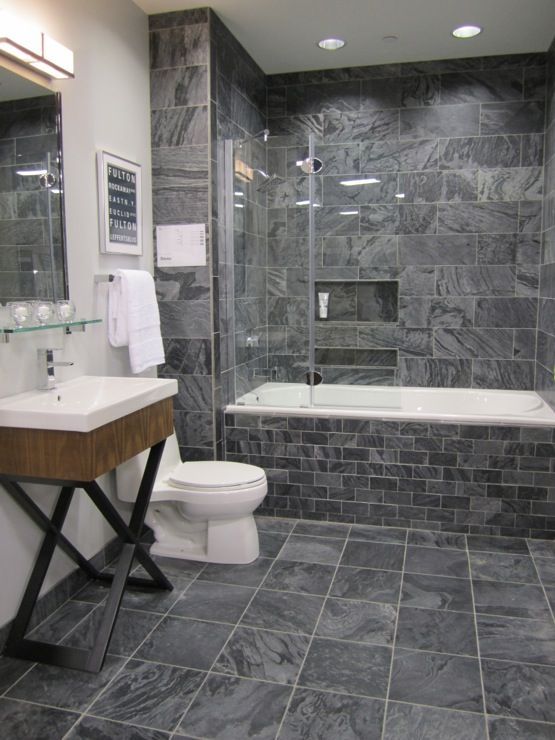
Types of Gray Slate Tiles: Natural vs. Engineered
When deciding on gray slate tile for your bathroom, one of the first decisions you’ll need to make is whether to go with natural slate or an engineered version. Both options have their pros and cons, and understanding the differences can help you make the best choice for your bathroom design.
Natural Slate Tile: A Timeless Classic Natural slate is exactly what it sounds like—a material that comes directly from quarries, cut, and shaped for use as a tile. I’m always amazed by the depth and character natural slate brings to a space. Its organic variations in color, ranging from soft gray to deeper charcoal tones, provide a rustic yet elegant look. Natural slate is also incredibly durable, making it an excellent option for high-moisture areas like the bathroom.
Engineered Slate: The Modern Alternative Engineered slate, on the other hand, is a man-made product designed to mimic the look of natural slate. It’s typically made from a combination of stone dust, resins, and pigments to create a material that looks like natural slate but is often more affordable. I’ve seen some beautiful engineered options that are hard to distinguish from the real thing, and they can be a great option if you’re looking to keep costs down without sacrificing style.
Durability Comparison While natural slate is known for its strength, engineered slate can sometimes be even more durable, especially when it comes to resisting cracks and chips. Natural slate, when not properly sealed, can be more prone to damage over time, whereas engineered slate is manufactured to be consistently strong and often comes pre-sealed, which makes maintenance easier.
Price Considerations When it comes to price, natural slate tends to be more expensive than engineered versions. The cost of natural slate reflects the labor-intensive process of quarrying and transporting the material. Engineered slate, on the other hand, is usually more budget-friendly, making it a viable option if you love the look of slate but want to keep your bathroom remodel within a certain budget.
Maintenance Needs Natural slate requires a bit more maintenance to keep it looking its best. It needs to be sealed regularly to prevent moisture from penetrating the surface, which can cause staining or damage. Engineered slate is typically less porous and doesn’t require sealing as often, which can be a big plus if you’re looking for a low-maintenance option.
Aesthetic Differences Both natural and engineered slate can create a stunning bathroom, but there are subtle aesthetic differences. Natural slate has more variation in tone and texture, which adds to its unique charm. Engineered slate tends to be more uniform in appearance, which might be a better fit if you’re aiming for a sleek, modern look. In the end, it comes down to personal preference—do you prefer the one-of-a-kind character of natural stone or the polished consistency of engineered slate?
Design Ideas: How to Incorporate Gray Slate Tiles in Your Bathroom
Gray slate tiles can be used in so many creative ways to elevate the design of your bathroom. Whether you’re aiming for a sleek, modern look or a more rustic, cozy vibe, slate tiles can help you achieve the perfect aesthetic. Here are some design ideas that I’ve found work beautifully when incorporating gray slate tiles into a bathroom space.
Slate Floor Tiles for a Grounding Effect One of the most popular ways to use gray slate tile is for bathroom flooring. The natural stone gives a grounded, earthy feel to the space, which I find helps create a calming atmosphere. Pairing slate floors with lighter-colored walls or white fixtures can create a beautiful contrast, making the space feel both modern and inviting.
Slate Tile Accent Walls If you want to make a bold statement, consider using gray slate tiles to create an accent wall in your bathroom. I’ve seen slate accent walls used behind freestanding bathtubs or vanities, and the effect is stunning. The texture and variation in the tiles draw the eye and add depth to the room, making it feel luxurious and spa-like.
Using Slate in the Shower Another fantastic way to incorporate slate tiles is by using them in your shower. Slate can be used on the shower walls or floor to create a cohesive, natural look. I love how the stone feels underfoot, especially in a walk-in shower where it helps create a spa-like atmosphere. Just be sure to seal the tiles properly to prevent water damage over time.
Mixing and Matching with Other Materials Gray slate tiles pair beautifully with other materials like wood, marble, or even glass. I’ve experimented with mixing slate tiles with wooden vanities or marble countertops to create contrast and texture. The warm tones of wood balance out the coolness of the slate, while the sleekness of marble adds a touch of luxury to the rustic feel of the stone.
Creating a Slate Mosaic For a more artistic approach, you could use smaller slate tiles to create a mosaic design in your bathroom. I’ve seen this done in shower niches, backsplashes, or as a decorative border around the room. The small, varied tiles create a textured, layered look that’s both eye-catching and unique.
Slate Wainscoting If you want to add some architectural interest to your bathroom, consider using slate tiles as wainscoting. This involves tiling the lower half of the walls with slate while keeping the upper half painted or tiled with a different material. I’ve found this to be a great way to add texture and durability to the walls, especially in areas that are prone to splashes and moisture.
The Benefits of Gray Slate Tiles: Durability, Style, and More
Gray slate tiles offer a host of benefits that make them a fantastic choice for any bathroom remodel. From their natural beauty to their practical advantages, slate tiles provide the perfect balance of form and function. Here are some of the top reasons I believe gray slate tiles are worth considering for your bathroom.
Timeless Style One of the biggest selling points of gray slate tiles is their timeless appeal. I’ve always loved how slate can look both modern and rustic at the same time. The natural stone has an organic texture that brings warmth to the space, while the sleek gray tones keep it feeling contemporary. Whether you’re designing a farmhouse-style bathroom or a more minimalist space, slate works beautifully.
Unmatched Durability Slate is one of the most durable natural stones you can choose for your bathroom. I’ve found that it holds up incredibly well to heavy foot traffic, moisture, and even the occasional dropped object. Once sealed properly, slate is resistant to water and stains, making it a great choice for wet environments like bathrooms.
Slip-Resistant Surface Safety is always a concern in the bathroom, and one of the things I love about slate is its slip-resistant surface. The natural texture of the stone provides grip, even when wet, which makes it a safer option for bathroom floors and shower areas. You can feel confident that slate will not only look great but also help prevent accidents.
Low Maintenance While slate does need to be sealed regularly to protect it from moisture, it’s otherwise quite low maintenance. I’ve found that it’s easy to clean with just a mild soap and water solution, and it doesn’t show dirt or water spots as easily as some other materials. Its natural variations also help hide any minor wear and tear over time.
Eco-Friendly Option If you’re looking to make an environmentally conscious choice, slate is a great option. Since it’s a natural material, it doesn’t require the same level of manufacturing as synthetic tiles. I love knowing that slate is a sustainable, recyclable material that won’t contribute to landfill waste at the end of its life.
Unique and One-of-a-Kind One of the things that sets slate apart from other tile options is its unique beauty. No two pieces of slate are exactly alike, which means your bathroom will have a one-of-a-kind look. I love the subtle variations in color and texture that make slate feel both luxurious and natural. It’s the perfect way to add character to your bathroom design.
Caring for and Maintaining Your Gray Slate Bathroom Tiles
Proper care and maintenance are essential to keeping your gray slate bathroom tiles looking beautiful for years to come. While slate is durable, it does require some attention to ensure it remains in top condition. Here are some of the best ways I’ve found to care for and maintain slate tiles in the bathroom.
Regular Cleaning Like any bathroom surface, slate tiles need to be cleaned regularly to prevent the buildup of soap scum, mildew, and grime. I recommend using a mild detergent or stone-specific cleaner to clean the tiles. Avoid harsh chemicals like bleach or ammonia, as these can damage the stone. A simple solution of water and a pH-neutral cleaner is usually enough to keep the slate looking fresh.
Sealing the Tiles One of the most important steps in maintaining slate tiles is sealing them. Slate is a porous stone, which means it can absorb water and stains if it’s not properly sealed. I’ve found that sealing slate every 6-12 months is sufficient to protect it from moisture and stains. Be sure to choose a high-quality stone sealer that’s designed specifically for natural stone.
Addressing Stains Quickly If you do notice any stains on your slate tiles, it’s important to address them quickly. Slate is more susceptible to stains from oils and other liquids, so wiping up spills immediately can prevent long-term damage. For tough stains, I’ve used a paste made from baking soda and water to gently scrub the area without scratching the stone.
Avoiding Scratches While slate is durable, it can still scratch if you’re not careful. I recommend placing mats or rugs in high-traffic areas of the bathroom to protect the tiles. Be cautious when moving heavy objects, as dragging them across the floor can leave scratches. I also try to use non-abrasive cleaning tools like soft cloths or sponges to avoid damaging the surface.
Restoring Dull or Faded Tiles Over time, slate tiles can start to look dull or faded, especially in areas that see a lot of moisture. If this happens, I’ve found that applying a color-enhancing sealer can bring back the rich, natural hues of the stone. This type of sealer not only protects the slate but also enhances its natural beauty, making it look as good as new.
Repairing Chips and Cracks If you notice any chips or cracks in your slate tiles, it’s best to address them sooner rather than later. I’ve found that small chips can often be repaired with a stone filler, which is available at most hardware stores. For larger cracks or damage, it may be necessary to replace the affected tile. Fortunately, slate’s natural variation means that even new tiles will blend seamlessly with the existing ones.
Gray Slate Tile Installation Tips for a Flawless Finish
Installing gray slate tiles in your bathroom can be a rewarding project, but it does require some careful planning and attention to detail. Whether you’re a DIY enthusiast or hiring a professional, following these tips will help ensure a flawless installation that looks beautiful and lasts for years.
Prepare the Surface The key to a successful tile installation is starting with a clean, level surface. I always recommend removing any old flooring or wall tiles and ensuring that the subfloor or wall is smooth and free of debris. For bathroom floors, you may also need to install a waterproof membrane to protect the subfloor from moisture.
Plan Your Layout Before you start laying the tiles, it’s important to plan your layout. I like to dry-lay the tiles to get a sense of how they’ll look and to ensure that any cuts will be minimal and symmetrical. Start from the center of the room and work your way outwards, adjusting the layout as needed to avoid small or uneven cuts along the edges.
Use the Right Adhesive When working with natural stone like slate, it’s crucial to use the right adhesive. I recommend using a thin-set mortar specifically designed for natural stone tiles. This type of adhesive provides a strong bond and ensures that the tiles will stay in place, even in high-moisture environments like the bathroom.
Grouting the Tiles Once the tiles are set, it’s time to apply the grout. I’ve found that using a darker grout can help hide any dirt or stains over time, while also complementing the gray tones of the slate. Be sure to apply the grout evenly and wipe away any excess before it dries. Sealing the grout after it cures will also help protect it from moisture and stains.
Cutting Slate Tiles Cutting slate can be a bit tricky due to its natural variations in texture and thickness. I recommend using a wet saw with a diamond blade for clean, precise cuts. If you’re new to tile cutting, practice on a few spare pieces of slate to get the hang of it before cutting your actual tiles.
Allow for Expansion Natural stone tiles like slate can expand and contract with changes in temperature and humidity. To prevent cracking or buckling, I always leave a small gap between the tiles and the walls, which can be filled with caulk. This allows the tiles to move slightly without causing damage.
Pairing Gray Slate Tile with Bathroom Fixtures and Accents
Once your gray slate tiles are installed, the next step is to choose fixtures and accents that complement the natural beauty of the stone. The right combination of materials and finishes can enhance the overall look of your bathroom, creating a cohesive and stylish space. Here are some of my favorite ways to pair gray slate tiles with bathroom fixtures and accents.
Choose Fixtures with Contrasting Finishes I love the way metallic finishes like brushed nickel, chrome, or matte black look against gray slate tiles. The contrast between the cool, matte finish of the slate and the shiny, reflective surfaces of the fixtures creates a striking visual effect. I’ve found that matte black fixtures, in particular, add a modern touch to the rustic elegance of slate.
Pair with Warm Wood Accents To balance out the cool tones of the slate, consider incorporating warm wood accents into your bathroom design. I’ve seen beautiful combinations of slate flooring with wooden vanities, shelving, or even mirror frames. The natural warmth of the wood softens the look of the slate, creating a cozy and inviting atmosphere.
Add Texture with Textiles One of the easiest ways to complement gray slate tiles is by adding texture with textiles. I like to use plush towels, bath mats, and shower curtains in neutral or muted tones that don’t compete with the natural beauty of the slate. Earthy colors like beige, cream, and soft gray work well, while patterns in textiles can add visual interest without overwhelming the space.
Incorporate Natural Elements Since slate is a natural stone, I find that it pairs beautifully with other natural elements like plants, stones, and wood. Adding a few potted plants or incorporating natural stone accessories like soap dishes and trays can enhance the organic feel of the bathroom. These natural elements bring life to the space and create a calming, spa-like atmosphere.
Use Lighting to Highlight the Slate Good lighting is essential in any bathroom, but it’s especially important when you have textured materials like slate. I recommend installing recessed lighting or wall sconces to highlight the texture and depth of the slate tiles. Warm lighting can also bring out the rich tones of the slate, making it the focal point of the room.
Coordinate with Matching or Complementary Tiles If you’re using slate tiles on the floor or in the shower, consider pairing them with complementary tiles on the walls or backsplash. I’ve seen beautiful combinations of slate with subway tiles, marble, or even glass mosaics. The key is to choose materials that complement the slate without overpowering it, creating a balanced and cohesive look.
Bathroom Slate Floors Design Photos and Ideas
Natural Slate Grey – Flooring Solutions Muskoka Flooring, Tile
Slate Gray II Ceramic Tile Floor and Decor
Slate Tile Bathroom Ideas You’ll Love
Black Slate Bathroom Tile
Best Grey Bathroom Tile Ideas – Neutral Interior Designs
Related Posts:
